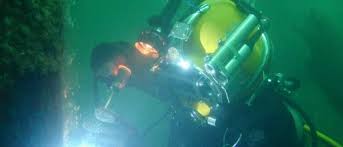Unveiling History’s Watery Secrets: The Significance of Underwater Archaeology
Why do we need to look into the water to understand our past? This question raises the importance of underwater archaeology in unraveling hidden traces of history that remain submerged in rivers, lakes, and seas. While we often overlook what lies beneath the water’s surface, the significance of exploring these submerged realms cannot be understated. In his inaugural lecture, Martijn Manders, the Endowed Professor of Underwater Archaeology and Maritime Heritage Management, sheds light on why underwater archaeology is crucial for comprehending our collective history.
Manders emphasizes the wealth of intriguing discoveries that lie within the waters. He highlights the presence of 1,623 Dutch-owned ships in the most unexpected and remote parts of the sea, offering insights into the identity and essence of the Netherlands. One notable example is the Rooswijk, a ship belonging to the Dutch East India Company from 1740. Research conducted on this vessel reveals the extensive international and Dutch maritime trade networks that continue to shape the Netherlands today.
Explorations into ships like the Rooswijk have led researchers to conclude that silver held such immense importance within these trade networks that even common individuals carried it for trading purposes during voyages. This historical significance sheds light on the origin of systems that are ingrained in our daily lives, such as the Netherlands’ enduring position in the foreign exchange market and the establishment of prominent financial institutions. Maritime archaeology, therefore, provides invaluable insights into the foundations of present-day systems, rendering them more tangible and comprehensible.
Notably, seemingly ordinary ships have also played pivotal roles in shaping Dutch history. The sinking of the Hr. Ms. Adder in 1882, for instance, led to the establishment of the Netherlands Coastguard. As this monitor ship encountered distress off the coast of Scheveningen, onlookers witnessed the vessel’s struggles, emitting smoke, but failed to offer assistance. Tragically, 60 crew members perished. This incident sparked a collective determination to prevent such a tragedy from recurring and served as a catalyst for the creation of the Coastguard.
Similarly, a shipwreck in the Scheurrak SO1 area, located on the Texel roadstead, provides insight into the development of a system. This ship, laden with vast quantities of grain, represents the grain trade with the Baltic region and the accumulation of Dutch wealth. Manders notes that both the Hr. Ms. Adder and the Scheurrak SO1 wreck were ordinary vessels without notable figures onboard. Nevertheless, their stories encapsulate pivotal moments in Dutch history, illuminating aspects of societal systems that may not be readily evident in traditional historical sources.
One of the distinguishing features of maritime archaeology is its objectivity, which contrasts with subjective written sources. This objectivity allows archaeology to contribute to sensitive topics, including slavery and colonialism. Skeleton analysis, for instance, can provide insights into the conditions prevalent during those times. Additionally, tangible artifacts such as slave shackles recovered from shipwrecks evoke emotions and facilitate conversations about the role of slavery in the Dutch economy and its enduring impact on contemporary society. Manders emphasizes that such discoveries compel us to reflect on our history, holding up a mirror to our present selves.
In conclusion, exploring the underwater realm through archaeology is vital for uncovering hidden remnants of the past. It allows us to grasp the significance of ordinary vessels, comprehend the origins of present-day systems, and engage with sensitive historical topics. By delving into the depths, we gain a deeper understanding of our collective history and its relevance to our contemporary lives.
Hits: 1





